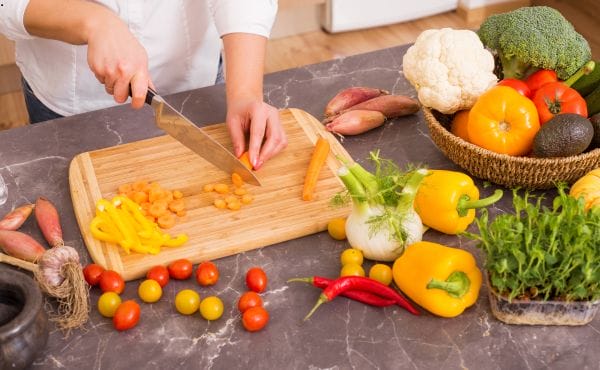Choosing the right cutting board size enhances your cooking and kitchen efficiency. It’s crucial to match size with cooking needs. This post explores standard sizes, factors influencing choice, and material impacts. Balancing space, usage habits, and storage, we’ll guide you through making informed decisions for your kitchen.
Cutting Board Size Chart
| Board Type | Board Size (Inches) |
| Small | 8×10 in |
| Medium | 10×14 in |
| Large | 18×24 in |
| Extra Large | 20×30 in |
| Round | 10×10 in |
Choosing the Right Size for Your Needs
When selecting the right cutting board size, several factors come into play. Firstly, consider your kitchen space; the board should fit comfortably on your countertop without overcrowding. Next, assess your cooking habits to match the board size with the types of meals you prepare most often.
Additionally, think about storage: ensure the board can be easily stored in your cabinets or on countertops when not in use. Balancing these factors involves tradeoffs, such as sacrificing size for storage convenience or opting for a larger board for versatility in meal preparation.
Each decision impacts kitchen efficiency and functionality, underscoring the importance of thoughtful consideration when choosing from the Cutting Board Size Chart.

Cutting Board Size Chart by Material
Different materials significantly influence the size and functionality of cutting boards. Wood cutting boards, renowned for durability and aesthetics, come in various sizes suitable for different culinary tasks.
Plastic cutting boards offer size options catering to easy maintenance and sanitation preferences. Bamboo cutting boards provide eco-friendly alternatives with a range of available sizes. Each material choice involves tradeoffs, such as durability versus ease of cleaning, and environmental impact considerations.
Selecting the right material from the Cutting Board Size Chart impacts not only kitchen efficiency but also sustainability practices, emphasizing the need for informed decision-making.
Specialized Cutting Boards
Specialty cutting boards cater to specific culinary needs, offering tailored solutions for diverse kitchen tasks. Over-the-sink cutting boards maximize space in smaller kitchens, providing convenient options for food prep and cleanup. Carving boards, designed for meat carving and elegant presentation, offer ample surface area and stability. Flexible cutting mats offer versatility, facilitating easy food transfer from board to pot or pan.
Choosing from these specialized options involves tradeoffs, such as space-saving benefits versus traditional board stability or ease of cleaning versus durability. Each choice from the Cutting Board Size Chart impacts kitchen workflow and efficiency, urging thoughtful consideration based on individual cooking preferences and practical needs.
Maintenance and Care Tips
Proper maintenance ensures the longevity and hygiene of your cutting boards. Cleaning guidelines vary based on the material; wooden boards require gentle cleaning to preserve their integrity, while plastic boards can withstand more rigorous sanitization. Storing boards properly prevents damage and maintains their quality, whether in cabinets or on countertops.
Maintenance practices like regular oiling for wooden boards and consistent sanitizing routines for all materials prolong their lifespan and ensure safe food preparation. Balancing these factors involves tradeoffs, such as time investment in upkeep versus board durability and hygiene standards. Considering these factors impacts the effectiveness of your decisions when selecting from the Cutting Board Size Chart.
Conclusion
In conclusion, selecting the right cutting board size is crucial for efficient cooking and kitchen organization. Choose a size that matches your cooking habits and kitchen layout to optimize functionality. Use our size chart and maintenance tips to elevate your culinary experience today!
FAQs
What size cutting board should I choose for a small kitchen?
Answer: Opt for a smaller board or consider over-the-sink cutting boards for space-saving solutions.
How do I determine the right size cutting board for large family meals?
Answer: Choose a large cutting board to accommodate larger quantities of ingredients and facilitate meal preparation.
Are wood cutting boards better than plastic ones in terms of size options?
Answer: Wood cutting boards offer a variety of sizes suitable for different tasks, but plastic boards often come in more standardized sizes for easy handling and storage.
How can I ensure my cutting board fits well in my kitchen cabinets?
Answer: Measure your cabinet space before selecting a board, and consider thinner or flexible options if space is limited.
What maintenance tips should I follow for wooden cutting boards?
Answer: Regularly oil wooden boards to prevent drying and cracking, and clean them gently to maintain their natural finish.